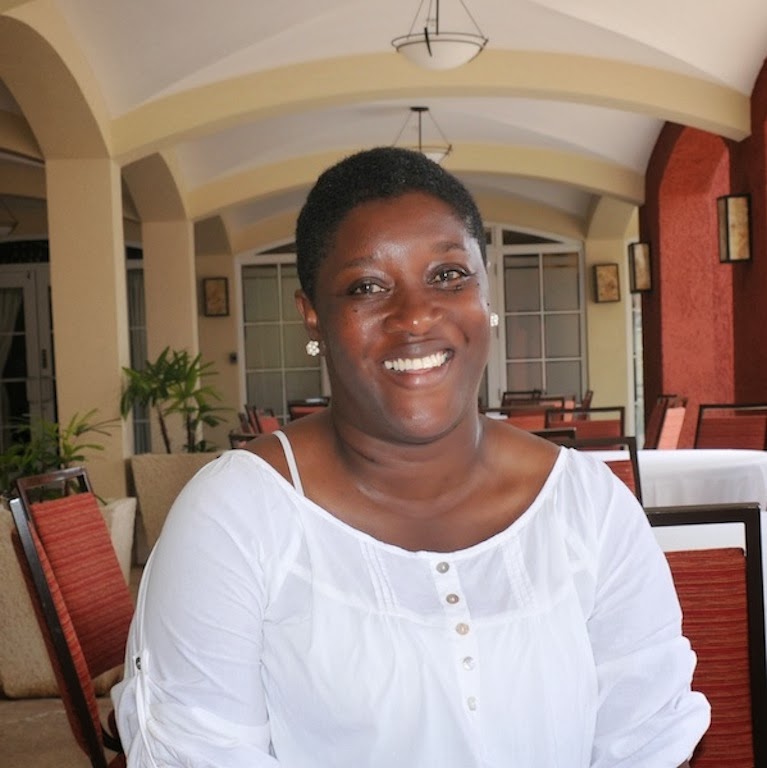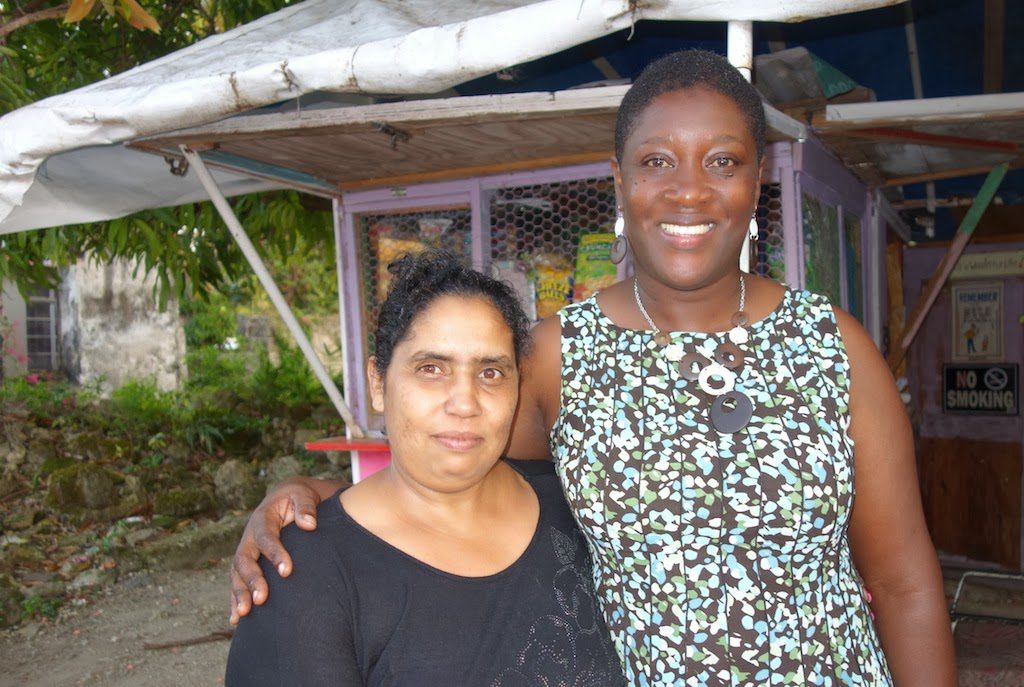
Last Sunday, I had a nice flight back from Union Island to Kingstown, St. Vincent, and Martin Jennett, the pilot, was so supportive of the work we do at Save One Life, he gave me a huge discount on the charter flight price, only $100 (compared to $160 going over). We said our good-byes, and then I waited to board my flight to Bridgetown, Barbados. I sat in the little airport café, sweating in the humid air, answering email and reading. It was a quick flight to Barbados.
I settled in at a pizza place (Chefette) at the airport to wait for and in a little while, a lady and son came up to me—Sofia! And her four-year-old Aaron, who has hemophilia. We embraced and as always, when you meet another mom (or dad) of a child with hemophilia, it really doesn’t matter your nationality, race, religion. We are all family.
 II had a leisurely morning, breakfast downstairs and then waiting for Sofia. And waited. Island culture—island time. Things will happen when they happen!
II had a leisurely morning, breakfast downstairs and then waiting for Sofia. And waited. Island culture—island time. Things will happen when they happen!
fever. As the plane was landing Aaron cried and cried, inconsolable. No one knew but he was having a spontaneous head bleed. They took Aaron to Long Island
Jewish Hospital, a good HTC, and Dr. Richard Lipton helped determine this was a
cranial bleed. They ordered a CT scan. She said they told her, another 15
minutes and the damage might have been irreparable. Now they realized he had
hemophilia. Her cousin finally told her that her dad and both uncles had it! Aaron
stayed at LIJH for 6 months, and received factor. And there seems to be no permanent damage, thankfully.
charged for. But inevitably it’s not enough and gets used quickly. This is why a few patients had recently contacted us for a donation.
filled with waiting, waiting. No lunch. My throat got worse as the day went on. It was hard to maintain a conversation as I could hardly speak.
chat. She showed me the drug formularies, the tender and explained how factor was procured. According to her, they spend only enough money for 75,000 IU of factor VIII, much less than what one American child uses in one year! But at least Barbados is buying some. Many countries that have much more money than Barbados don’t even buy factor.
 |
| Queen Elizabeth Hospital |
No one seems to know how many patients are on the island. I calculated 20? But one doctor later estimated 50. This, I told Sofia, is where a patient organization can really help out, by reaching out to patients in all the “parishes,” as they call them—St. John’s, St. Andrew’s, etc.
NovoSeven?” Which I guess shows the state of desperation here.
also mention the “poor whites,” on the other side of the island. This raised our eyebrows as being a politically incorrect thing to say, but yes, this is a real term used here.
women press-ganged by soldiers, taken to Cork and shipped to Bristol where they
were sold as slaves and transported to Barbados.” They are now called “poor
whites,” or Red Legs or Red Shanks. They live in St. John parish and no one
knows much about them except they have hemophilia among them; they tend to intermarry and not mingle with the blacks. I thought that would make for a very interesting visit my next time around.
of Aaron’s allergic reaction, he was also in agreement that the manufacturer needed to be contacted. It’s great to find a doctor so agreeable and open-minded. He lamented that no medical records here are kept digitally; all records are kept on paper! He studied in the UK and just returned not even four years ago here. He works in the QEH but also has his own practice. We asked if he might be interested in forming a nonprofit with Sofia,
and he agreed.
at ourselves trying to get Remel to be still. Finally I tricked him and as he turned the corner, caught him in a great shot. I jumped in the air and pumped my fist, and the mom, and the neighbors sitting and watching all applauded! It was great.
 |
| Dinner with Barbadian families |
There was Kole and Kim, whose son Konnor has FIX—a handsome couple. Jeffrey, age 61, a real
hoot… great outlook and sense of humor. Ansley Marshall, with son Caiel. And Leemar, age 26, FIX with an inhibitor, so sweet, gentle and funny! Born only a month before my son, but
a world away. He has suffered horrifically. Jeffrey is his uncle. They both
spoke about what the pain was like: four nights, no sleep. You don’t want anyone
near you. No one can do anything for you to alleviate the pain. Jeffrey said,
“And you just pray for a few seconds, just a few seconds, of no pain so you can
have some relief.” The pain comes in waves, like the ocean that pummels the beaches
on this beautiful island. Leemar’s friend who brought him was interested and
asked questions. Such bright young men.
We took a photo, I paid the check for the dinner and drinks we bought for everyone, and promised to follow up with books and materials. I gave a pep talk about change and what they can do as patients and leaders to improve medical care and access to factor. But it wasn’t my best as my poor voice was at an end. But it was a great way to end a great trip.

The origin of the name Barbados?The name is Portuguese. The reference of the Portuguese to the island as Los Barbados (the bearded ones) is believed to describe the bearded fig trees on the island.








2 thoughts on “Barbados: Preparing Leaders for Change”
Thank you very much for coming and everything. Thank Zoraida for me also!
Laurie thanks for posting about your trip, as always. I hope it starts them off in a great direction for the younger generation not to have to compare their pain to the waves of the beautiful ocean. I wish them the best of luck as they form their Hemophilia Society.